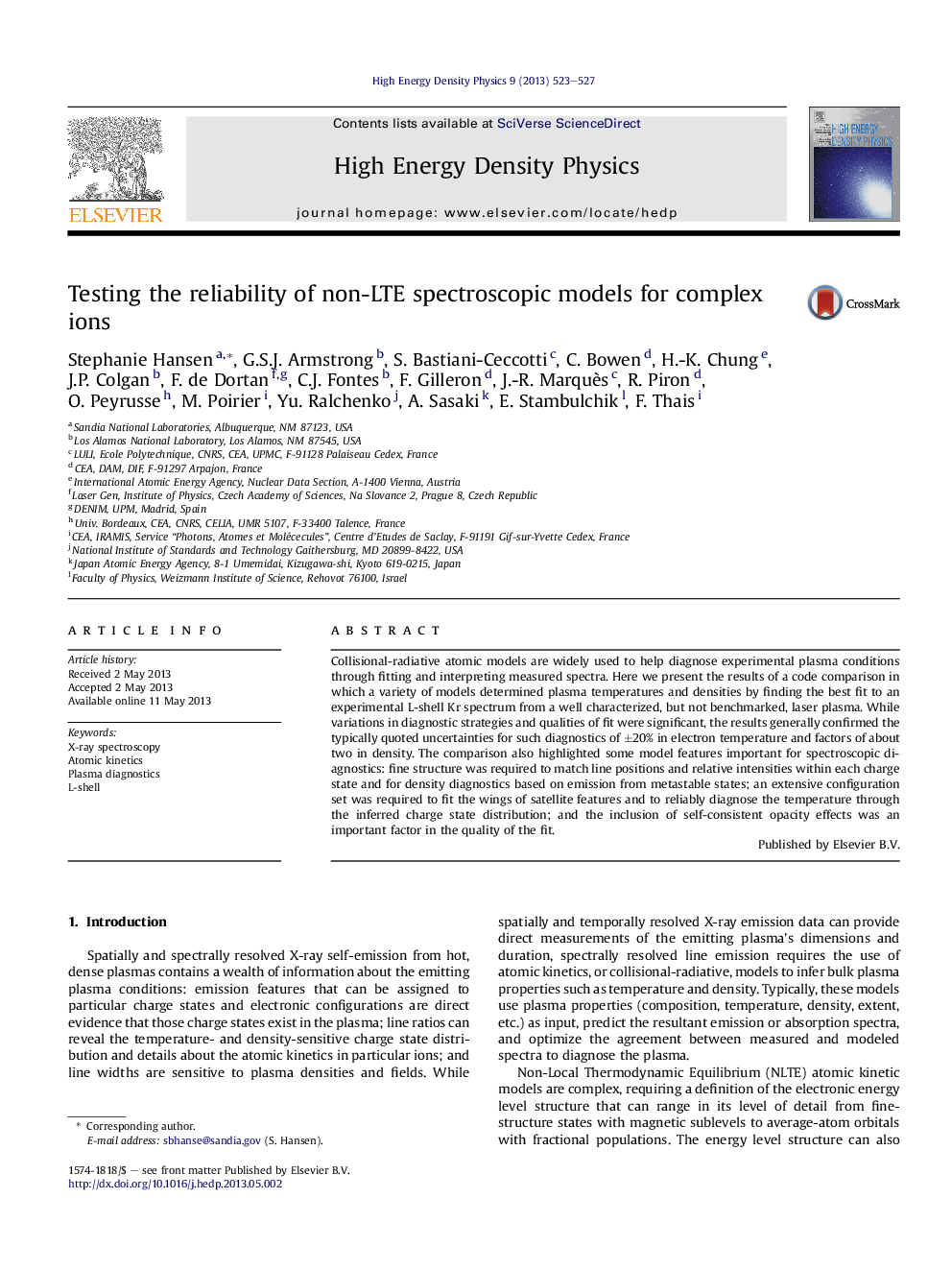| Article ID | Journal | Published Year | Pages | File Type |
|---|---|---|---|---|
| 1772473 | High Energy Density Physics | 2013 | 5 Pages |
Collisional-radiative atomic models are widely used to help diagnose experimental plasma conditions through fitting and interpreting measured spectra. Here we present the results of a code comparison in which a variety of models determined plasma temperatures and densities by finding the best fit to an experimental L-shell Kr spectrum from a well characterized, but not benchmarked, laser plasma. While variations in diagnostic strategies and qualities of fit were significant, the results generally confirmed the typically quoted uncertainties for such diagnostics of ±20% in electron temperature and factors of about two in density. The comparison also highlighted some model features important for spectroscopic diagnostics: fine structure was required to match line positions and relative intensities within each charge state and for density diagnostics based on emission from metastable states; an extensive configuration set was required to fit the wings of satellite features and to reliably diagnose the temperature through the inferred charge state distribution; and the inclusion of self-consistent opacity effects was an important factor in the quality of the fit.
